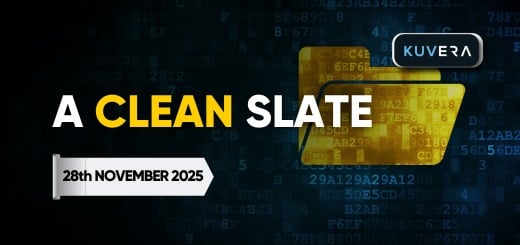In this edition, we talk about India’s economic growth in the past fiscal and the trends for the current year. We also discuss the government kickstarting its FY24 divestment with Coal India and the pressure faced by Indian IT companies.
Welcome to Kuvera’s weekly digest on the most critical developments related to business, finance, and the markets.
tl;dr Hear the article in brief instead?

John Maynard Keynes, the British economists widely regarded as the father of modern macroeconomics, once offered an advice to fellow economists. “If economists could manage to get themselves thought of as humble, competent people, on a level with dentists, that would be splendid,” he said.
We won’t go that far and, of course, economics and dentistry are widely different fields. But Keynes’ comment could still hold a lesson for some economists, including those who analyse India’s growth trajectory.
You see, this week India’s gross domestic product growth surpassed even the most optimistic of forecasts by economists and that, too, by a big margin.
GDP growth accelerated to 6.1% in the January-March period—the last quarter of FY23—from 4.5% in October-December, topping the consensus estimate of 5.0% by more than one percentage point.
A growth rate of 6.1% in normal circumstances would have been a run-of-the-mill number. But the latest data is impressive given the global slowdown and the monetary tightening in India and worldwide.
Economic growth during the quarter was primarily driven by construction, trade and transport sectors, and strong investments, especially the government’s capital expenditure that has more than doubled in the last three years to Rs 10.01 trillion. The capex push seems to be bearing fruit, with growth in gross fixed capital formation, an indicator of investments in the economy, accelerating to 8.9% in January-March from 8.0% a quarter ago.
The higher-than-expected quarterly growth prompted the National Statistical Office to raise its estimate of full-year expansion in 2022-23 to 7.2% from 7.0% earlier, retaining India’s position as the fastest-growing large economy. The NSO’s 7.0% estimate was based on the assumption that GDP will grow 5.1% in the last quarter of the year.
This is not all. A number of analysts have now raised their growth forecasts for 2023-24 on the back of the impressive January-March number. Moreover, this will ease pressure on the Reserve Bank of India’s Monetary Policy Committee to reduce interest rates immediately. Most analysts now expect the rate-setting panel to remain on pause probably until the end of 2003, before starting to cut rates.
Staying Resilient
If the government data isn’t enough to put a smile on your face, here’s another reason. The RBI also says that prospects for the economy look bright and estimated India’s growth for FY23 at 7%.

In its annual report for 2022-23, released during the week, the central bank said that the economy has exhibited “robust resilience”. More importantly, the RBI said the growth momentum is likely to sustain in FY24 thanks to easing inflationary pressures, sound macroeconomic policies and softer commodity prices.
A robust financial sector, a healthy corporate sector, and new growth opportunities stemming from global realignment of supply chains are other reasons to be optimistic, the RBI said.
The central bank, however, also added a note of caution. It said weakening consumption in the second half of FY23, subdued rural demand and sustained cost pressures remained a drag.
High-Frequency Data
We are just in the third month of the current fiscal year but the rosy forecasts for FY24 seem not off at all, if one were to go by high-frequency data released so far.
India’s factory output, as measured by the Purchasing Managers’ Index, or PMI, expanded at the quickest pace in 31 months in May at 58.7, up from 57.2 in April. The manufacturing PMI has printed above 50, the measure above which it shows expansion, for 23 straight months now.
The idea of a pick-up in manufacturing activity is further supported by data for the Goods and Services Tax, or GST, which grew 12% year over year to Rs 1.57 trillion in May. This is the fifth time since the introduction of the new indirect tax regime that monthly collections have been above Rs 1.5 trillion.
But then there is always some dichotomy in data. The core sector growth in April, a month when both the PMI and GST collections were in sync to paint an improved economy, hit a six-month low of 3.5%.
We can only hope that the core sector, which includes data from eight key industries, would have joined the bandwagon in May when data for the month is released at the end of June.
Going back to FY23, another data that the government released this week was for fiscal deficit.
India’s fiscal deficit not only narrowed from the previous year but also met the government’s target of 6.4% with a lot of help from robust tax collections and higher GDP. The windfall tax on oil revenue and plugging in leaks in GST collections helped, too.
The cherry on the cake was the handsome dividend paid by the RBI to the government. The central bank doled out Rs 87,416 crore for the year ended March 31. This is almost double of what the government had projected in the budget as dividends from the central bank and state-owned banks.
For greater perspective, this is also more than double the highest dividend payout by a company last year. That company was Tata Consultancy Services. India’s biggest IT services exporter paid a dividend of Rs 42,090 crore.
So, does this spate of good news mean the stock market will continue to remain at elevated levels? For now, perhaps.
But there could be a correction lurking ahead, so remain cautious and invest wisely.
IT under pressure
While the economy seems to be on a roll, Indian IT companies appear to be facing an earnings crunch.
Three out of India’s top five IT companies have seen their revenue per employee decline over the past five years, a news report said this week. In the report, Moneycontrol said that the aggregate revenue per employee for TCS, Wipro, and HCL Tech have declined by 3.8-11% on an annualised basis. Infosys and Tech Mahindra have bucked the trend.
This decline was driven by the increase in hiring across these companies in response to the Covid pandemic-driven demand, surpassing net revenue growth, which remained relatively slow paced due to lower margins in digital deals.
This basically means that margins have come under tremendous pressure, even as the IT sector saw record hiring numbers in FY22, both in lateral hiring and fresher additions. The top five firms collectively added around 273,377 employees by the end of the fiscal year.
Does that mean the party for the Indian IT sector is over for good? Not really. But it does mean that IT stocks could remain under pressure for a while. So, if you are a long-term investor, this may be a good time to accumulate shares of some of these companies. But, as always, don’t take our word and do your own research before investing.
Kicking off divestment
Meanwhile, the government sought to give its disinvestment drive a push this week as it launched an offer for sale (OFS) to sell a stake of up to 3% stake in Coal India Ltd. At a floor price of Rs 225 per share, the sale was at a discount to the prevailing market price of the stock, resulting in a 5% decline in the price.

In fact, the counter had been falling ever since the government said it would offload shares in the public-sector company. The two-day share sale opened for subscription on Thursday and ended Friday.
Although the government’s initial plan was to offload 1.5% share, following a 346% oversubscription by institutional investors, it will exercise the greenshoe option. The government currently holds a 66.13% stake in Coal India.
Market watchers said that the counter fell as the prevailing market price was higher than the OFS price both for retail as well as institutional investors. Due to this price gap, Coal India shareholders started offloading their position fearing market adjustment after the announcement.
This is the first big-ticket sale from the government so far in FY24 to meet its disinvestment target of Rs 51,000 crore. This is the third time the government is selling a stake in Coal India via the OFS route since listing. In the previous two instances, the portion set aside for retail investors was fully subscribed.
Market Wrap
It would have turned out to be a good week for the two broader market indices—the 30-share Sensex and the 50-script Nifty, except that it did not.
Both the Sensex and the Nifty ended the last five trading sessions flat, as they gave up their gains mid-week.
Over the past year though, the two indices have given a return of more than 11%, in a market that had remained sideways for a better part of the past 12 months.
Among the Nifty 50 stocks that gained the most during the week were Yes Bank, Titan, Hero MotoCorp and Hindustan Unilever. Others that ended the week in the green included the likes of Sun Pharma, Tata Motors, Mahindra & Mahindra, Asian Paints, Ultratech Cement and Wipro.
Counters that lost ground during the past five trading sessions included ONGC, Vedanta, Coal India, GAIL India, PowerGrid, and the HDFC twins—HDFC Ltd and HDFC Bank. Other shares that fell were ICICI Bank and Infosys.
Other headlines
- US Senate passes bill to raise debt ceiling to avert first-ever default
-
Vedanta parent raises $450 million from rivals Trafigura, Glencore
- Govt weighs 3-8% increase in MSP for kharif crops
-
Google leads $36 million funding in space technology startup Pixxel
- Govt interviews for post of RBI’s deputy governor as MK Jain’s tenure nears completion
- Naukri parent Info Edge starts forensic audit into Housing.com founder Rahul Yadav’s startup 4B Networks
- TVs to cost 10% more as open cells get costlier; laptops, phones may follow
-
Govt in talks with US-based Micron Technology for semiconductor fab factory
- FPI flows likely to fall on SEBI’s stricter ownership disclosure rules
- UP govt plans to develop Lucknow-State Capital Region on lines of Delhi-NCR
- CBDT amends income tax rules, to expand tax exemption for public sector shares
That’s all for this week. Until next week, happy investing!
Interested in how we think about the markets? Read more: Zen And The Art Of Investing
Watch here: Investing in Flexi cap funds
Start investing through a platform that brings goal planning and investing to your fingertips. Visit kuvera.in to discover Direct Plans and Fixed Deposits and start investing today. #MutualFundSahiHai #KuveraSabseSahiHai











